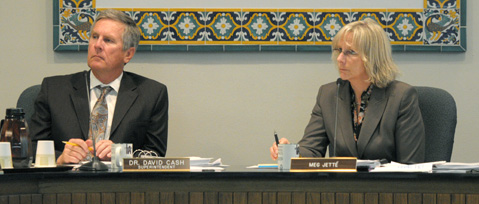School District Owes State $7.9 Million
Superintendent David Cash Will Be Negotiating With the Department of Finance This Week

The Santa Barbara Unified School District will have to pay back the state $7.9 million if district administrators can’t convince the Department of Finance otherwise.
The 2011-2012 school year marked the first time the district was considered “basic aid,” meaning funds it received from property taxes disqualified it from receiving state money. When Redevelopment Agencies (RDAs) were dissolved in 2012, the district was classified as “basic aid” for the second year in a row. Now, it is required to give a percent back— also known as the Fair Share Reduction— or a sum of about $8 million, which is expected of all districts that are “basic aid” for two years in a row.
“We have bad luck that we’re just over the threshold. It’s a perfect storm that could temporarily hurt our funding, even though our funding is increasing overall,” Assemblymember Das Williams said. “If the school district has to pay back that $7.9 million in one year, that’s going to be a big interruption in prosperity and we should avoid that.” Williams explained a back-up option is to convince the Department of Finance to allow the district to pay the money back over several years. “[The dissolution of the RDAs] offsets what the state owes us…. if we get more, then they take it,” said Assistant Superintendent Meg Jette.
When the state proposed to dissolve (RDAs) in 2011 to divvy up the funds to taxing entities, many legislators — including Williams and State Senator Hannah-Beth Jackson — defended axing the agencies in favor of funding public schools. RDAs were created decades ago to develop affordable housing and increase development in areas considered “blight.” Prior to their dissolution, these agencies were essentially self-financing because the projects they developed drove up property values, and then the agencies received the “increased” tax revenues to fund new projects and pay back bonds. Williams and Jackson advocated for gutting the RDAs a few years ago as the definition of “blight” became unreasonable.
The good news for the district is that funds from the Local Control Funding Formula are expected to increase per pupil funding each year until it is fully implemented by the 2020-2021 school year. Currently per pupil spending for the district is $7,091, but per pupil spending is expected — albeit only a projection — to increase to over $10,000 by 2020-2021. In simple terms, school districts receive money from a combination of local property taxes and state taxes based on its “revenue limit,” which is calculated from a complex formula based in part by how many students attend school each day.
Superintendent Dave Cash and Jette— along with Williams— will negotiate with the Department of Finance next week.


